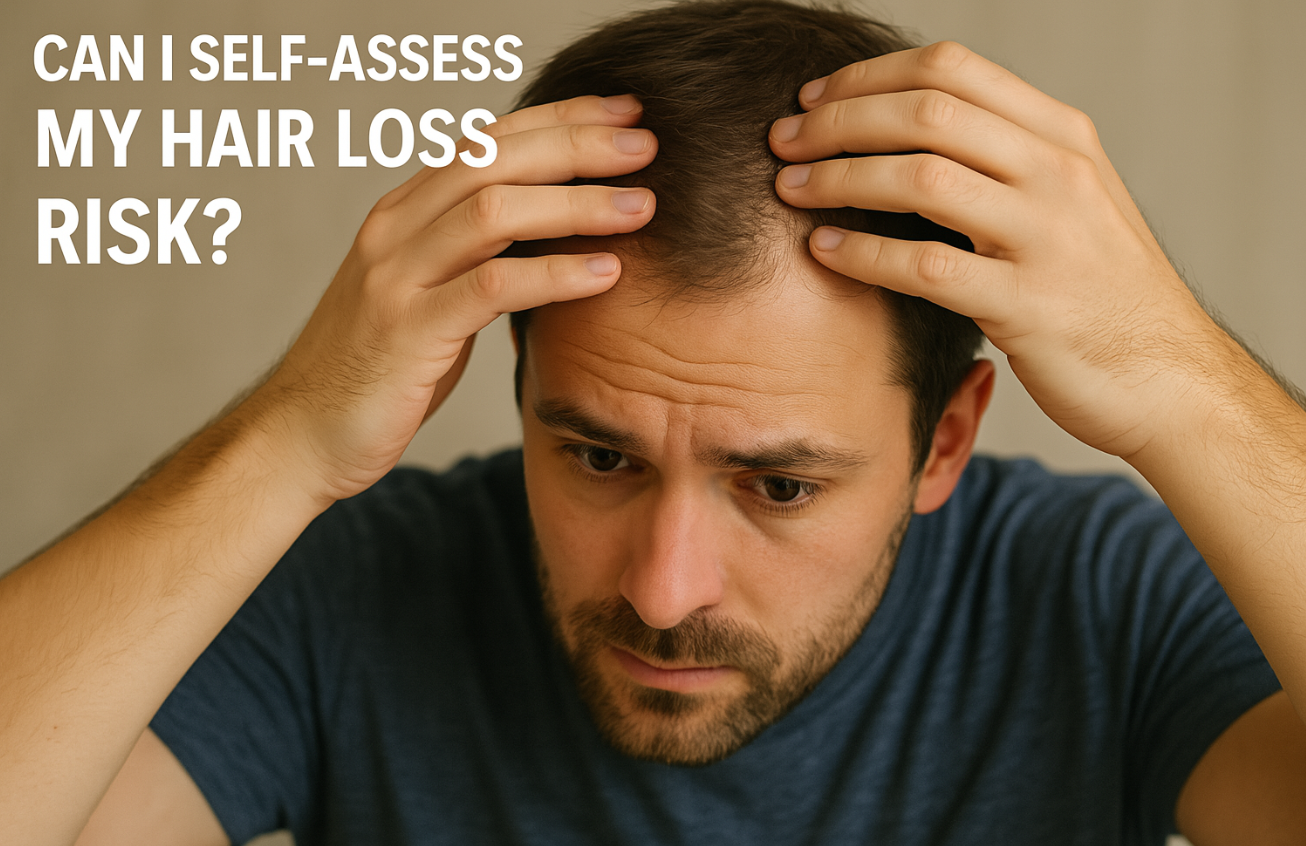Have you ever looked in the mirror and thought your crown looks thinner than before? Or maybe you’ve noticed more hair collecting in the drain after a shower? Sometimes, it’s a photo that catches us off guard—suddenly, your scalp looks more visible than expected, and you wonder, “Am I losing my hair?” In fact, many people recognize signs of hair loss before any official diagnosis.
But is it possible to assess your hair loss risk by yourself before going to a clinic?
The answer is yes—at least to some degree. While self-checks aren’t a substitute for professional evaluation, there are practical ways to recognize early signs and determine if you’re at risk. Here are several simple self-assessment points you can observe in your daily life.

First, consider the thickness of your hair. If your hair feels noticeably finer or weaker than before—especially around the hairline or crown—it could be an early sign of male or female pattern hair loss. Thinner strands usually indicate weakening follicles.
Second, examine your hair loss pattern. For men, a receding hairline or M-shaped hairline is common with genetic hair loss. For women, thinning tends to appear along the part line, with reduced volume across the entire scalp rather than in isolated spots.
Third, pay attention to the amount of hair falling out daily. Losing 50 to 100 hairs per day is considered normal. But if you notice significantly more hair in the shower, on your pillow, or stuck to your clothing—especially when not washing your hair—it might be worth investigating.
Fourth, look at your scalp health. Redness, itchiness, excess dandruff, or oily buildup can indicate scalp inflammation or an unhealthy environment for hair growth. If your scalp often feels hot or irritated, it may suggest poor blood circulation to the follicles.
Beyond these symptoms, there are additional risk factors to consider. A family history of hair loss, high stress levels, nutritional deficiencies (especially due to dieting), and hormonal changes can all increase your chances of experiencing hair thinning. Poor habits like lack of sleep, smoking, and excessive caffeine intake also negatively impact scalp health.
By combining these observations, you can get a rough idea of your current hair loss risk—even without seeing a doctor. The key is not to panic over every fallen hair, but to watch for changes in patterns and consistency over time.
Fortunately, online tools now make it even easier. Many websites offer simple self-assessment quizzes where you answer questions about your habits, family history, and symptoms. These tools provide a quick and helpful overview of your risk level, and can help you decide if a medical consultation is necessary.
In the end, the earlier you recognize hair loss, the better your chances of slowing it down. Don’t wait until it’s too obvious to act. Take a few minutes today to check your hair, your scalp, and your daily habits. A simple checklist or test might be the first step toward protecting your hair for the long run.
'nohair' 카테고리의 다른 글
| What Foods Are Good for Preventing Hair Loss? (0) | 2025.07.28 |
|---|---|
| 탈모에 좋은 음식, 무엇을 먹어야 할까? (0) | 2025.07.28 |
| 셀프로 확인하는 나의 탈모 위험도, 가능한가? (0) | 2025.07.27 |
| Male vs. Female Pattern Hair Loss: What’s the Difference? (0) | 2025.07.27 |
| 남성형 탈모 vs 여성형 탈모, 어떻게 다를까? (0) | 2025.07.27 |